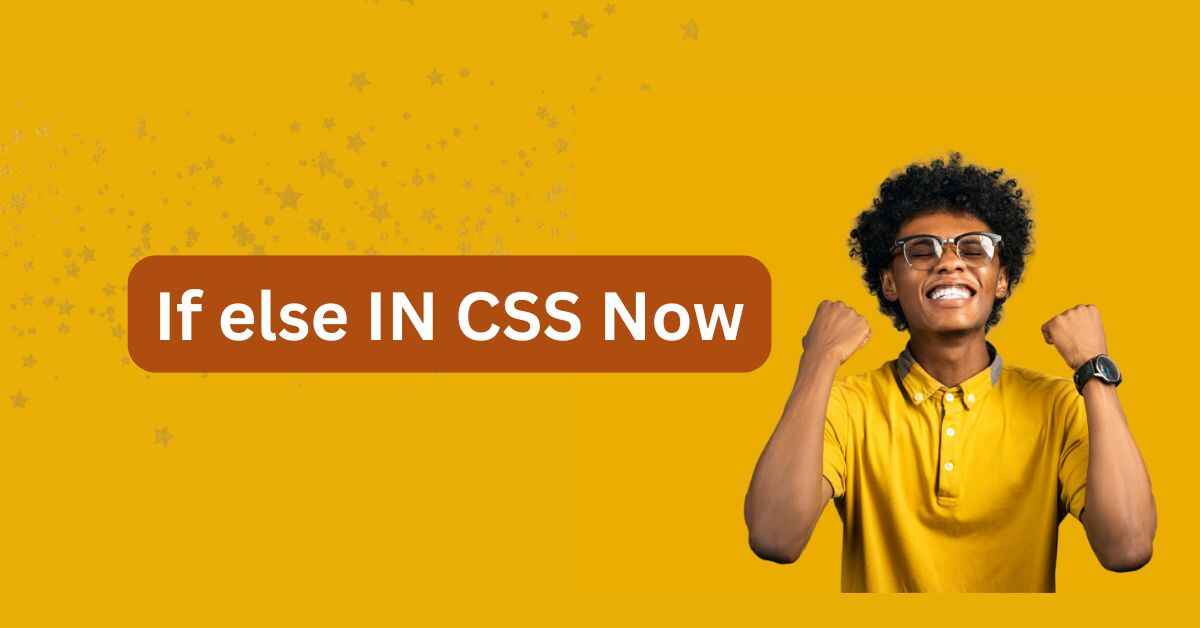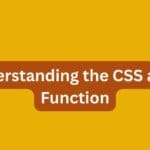|
Getting your Trinity Audio player ready... |
CSS is finally getting smarter! Thanks to the new and experimental if() function, you can now apply styles conditionally—something web developers have always wanted without relying on JavaScript or bulky workarounds.

In this guide, you’ll learn what the if() function in CSS is, how it works, and how you can use it to write cleaner and more responsive styles.
🔧 What Is the CSS if() Function?
The if() function is a new CSS feature that lets you set property values based on conditions—kind of like how if...else works in JavaScript.
✅ Quick Syntax:
property: if(condition: value; else: fallback);You can apply different styles depending on:
- CSS custom property values
- Media queries (like screen width or orientation)
- Feature support (like color formats or selector types)
⚠️ Important: This is an experimental feature. It’s currently supported only in the latest versions of Chromium-based browsers like Chrome and Edge. Don’t use it in production without fallbacks.
🔍 When Would You Use if()?
Imagine you’re building a dark mode, or want to show different layout styles depending on screen width, or want to test if a browser supports a new CSS feature like lch() color. Instead of using JavaScript or multiple media/feature queries, you can now do it directly in your CSS using if().
🎨 CSS if() Function Examples
Let’s explore some real-world scenarios to better understand how this works.
1. Using Custom Properties (Style Queries)
You can check the value of a CSS variable and apply styles accordingly.
color: if(style(--mode: dark): white; else: black);
If --mode is set to dark, the text will be white. Otherwise, it will be black.
2. Responsive Design with Media Queries
You can change property values based on screen width or orientation without writing full @media blocks.
margin-top: if(media(width < 600px): 0; else: 20px);
On small screens, top margin is 0. On larger screens, it’s 20px.
3. Feature Detection (Like @supports)
Want to use fancy new features while keeping fallbacks?
border-color: if(supports(color: lch(70% 60 30)): lch(70% 60 30); else: #444);
If the browser supports lch() color, it uses it. Otherwise, it falls back to a safe hex value.
4. Multiple Conditions
You can use multiple tests and fallbacks:
background-image: if(
style(--theme: ocean): linear-gradient(#aaf, #00f);
style(--theme: fire): linear-gradient(#f90, #f00);
else: none;
);
The first matching condition is used. If none match, the else value is applied.
5. Partial Values in Shorthand Properties
You can insert if() inside other values:
border: 2px solid if(supports(color: lch(70% 60 30)): lch(70% 60 30); else: #888);
Only the color part is dynamic here.
6. Nesting if() Inside Other Functions
You can nest if() inside calc() or even other if() functions.
width: calc(if(style(--wide: true): 80%; else: 60%) - 40px);
This calculates width based on a custom property.
💡 Tips for Using if() Effectively
- ✅ Always include
elseto avoid invalid values. - ❌ No space after
if—if ()is invalid, it must beif(). - 🧪 Use with fallbacks for older browsers.
- 🌐 Combine with
var()to make themes more dynamic. - 💬 Debug styles by using
elseto show fallback messages or colors.
⚙️ Browser Support
As of now (July 2025), only Chrome 137+, Edge 137+, and Opera 122+ support the if() function. Other browsers like Firefox and Safari do not support it yet.
| Browser | Support |
|---|---|
| Chrome | ✅ 137+ |
| Edge | ✅ 137+ |
| Firefox | ❌ No support |
| Safari | ❌ No support |
| Opera | ✅ 122+ |
✅ Best Use Cases
- Dark/light mode switching via CSS only
- Single-property responsive adjustments
- Graceful feature fallback styling
- Dynamic themes using custom properties
- Reducing JavaScript logic for UI styling
🧪 Final Thoughts
The if() function in CSS is still experimental, but it opens the door to more powerful and logical styling techniques. It’s an exciting step toward making CSS more programmable and dynamic—without relying on JavaScript or external tools.
If you’re experimenting with advanced layouts, responsive design, or progressive enhancement, this feature is worth trying (with fallbacks, of course!).
Written by Arsalan Malik
Explore more guides and tools at Makemychance.com
Source- MDN
Arsalan Malik is a passionate Software Engineer and the Founder of Makemychance.com. A proud CDAC-qualified developer, Arsalan specializes in full-stack web development, with expertise in technologies like Node.js, PHP, WordPress, React, and modern CSS frameworks.
He actively shares his knowledge and insights with the developer community on platforms like Dev.to and engages with professionals worldwide through LinkedIn.
Arsalan believes in building real-world projects that not only solve problems but also educate and empower users. His mission is to make technology simple, accessible, and impactful for everyone.



